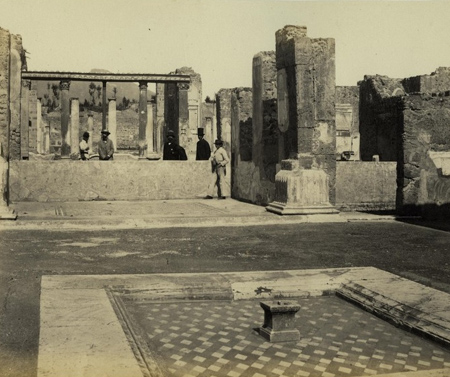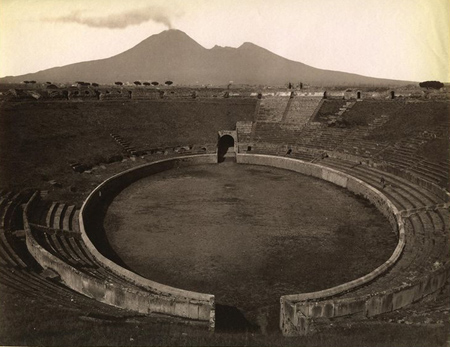 2
2mainland Greece via Puteoli. The increasing evidence of art and craft workshops in the area around Puteoli, also suggests that this particular part of Campania/Magna Graecia would have had its own thriving creative communities, perhaps even rivalling those of Rome. As John Ward-Perkins and Amanda Claridge succinctly put it, ‘Power and authority had moved to Rome, but in terms of commerce, culture and the arts Campania enjoyed a prosperity fully equal to, and in certain respects in advance of, that of Rome itself.’ (John Ward-Perkins and Amanda Claridge, Pompeii AD79, 1977, p.15; F. Altheim in A History of Roman Religion. 1938, p.291, also makes a similar point when he argues that the archaeological evidence supports the theory that the ‘stream of Hellenism’, as he calls it, proceeded towards Rome from the south of Italy, largely because of the Greek communities in Magna Graecia and their long established cultural and trading connections with mainland Greece.)
The existence of permanent theatres and amphitheatres in Magna Graecia long before Rome also supports the region's more than provincial status in relation to cultural production. Capua, near what is now modern Naples, had the largest amphitheatre in Italy prior to the building of the Colosseum at Rome. Pompeii's amphitheatre is the oldest in Italy and its permanent theatre was built over 100 years before General Pompey funded the construction of Rome’s first stone theatre (fig.1).
Whilst facts such as these appear to erode Rome’s status as the cultural epicentre, it is important to bear in mind that Pompeii became a Roman colony in 80 BC following Sulla’s campaign. Once subjugated, the Pompeians were ordered to give property to legionaries and their families. The appropriation of property and the date of subjugation are both significant because many of the architectonic and figurative wall-paintings in Pompeii are dated from 80BC onwards. If correct, this suggests that the architectural and perspectivally orientated wall-paintings (Second Style Mau) may have been introduced with Roman colonisation.
Houses, Villas and Wall-Paintings
One of the first things that the German writer Goethe observed on his entry into Pompeii in the late 1780s was that the houses were ‘…small and windowless…’ (Goethe, J. W., 1788, Italian Journey. trans. W. H. Auden and E. Mayer, 1962, London Collins ed: p.189). Goethe’s observation may well have been true at the time of his visit. However, more recent excavations have unearthed extremely palatial residences. The Casa del Fauno, for example, occupies 2,940 square meters of land and is often described as resembling a Hellenistic palace (fig.2). With regard to the windowless appearance of most of the excavated properties, this was partially due to the fact that windows, if used at all, normally existed above street level. This was mainly for security reasons and this level disappeared as a result of the eruption. In addition to security, houses were orientated inwards in order to accommodate seasonal variations. Inward sloping roofs with central openings provided light, air and a fresh water supply. Hence, at ground level there was a surfeit of windowless walls that could accommodate floor to ceiling wall-paintings. In many cases the entrance to the room was the only point of discontinuity, which meant that serial compositions could be wrapped around the room's interior.
 2
2 1
1
|